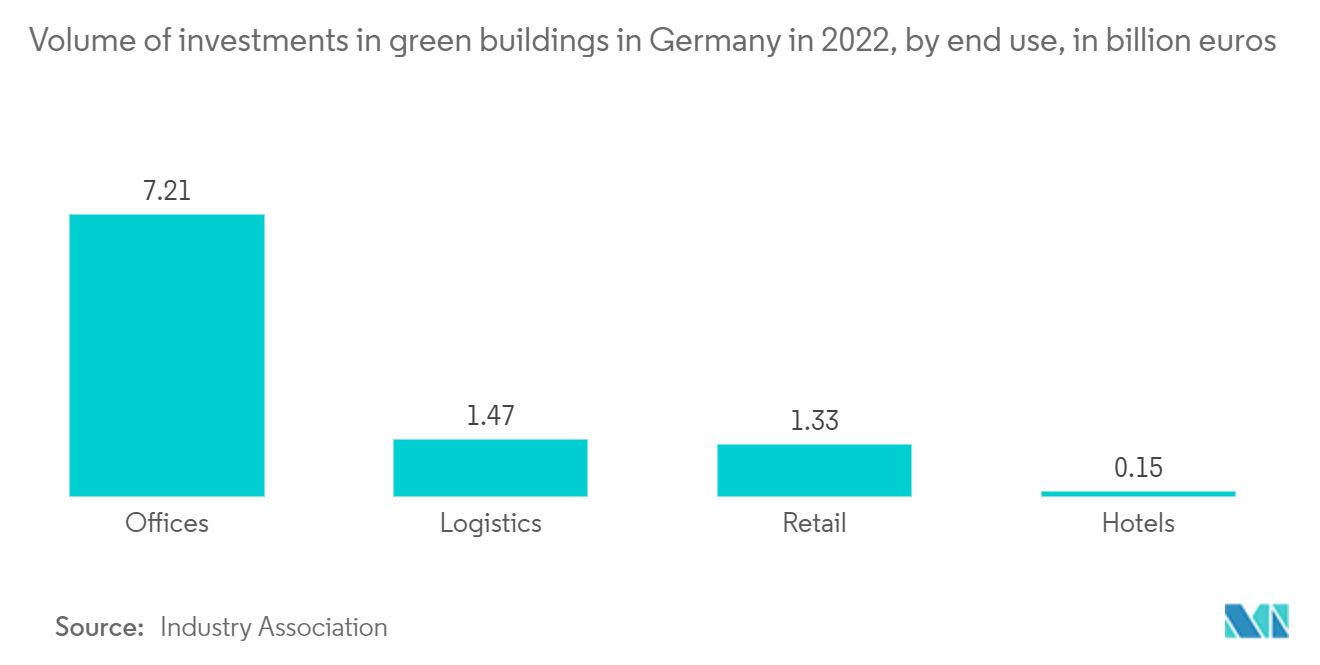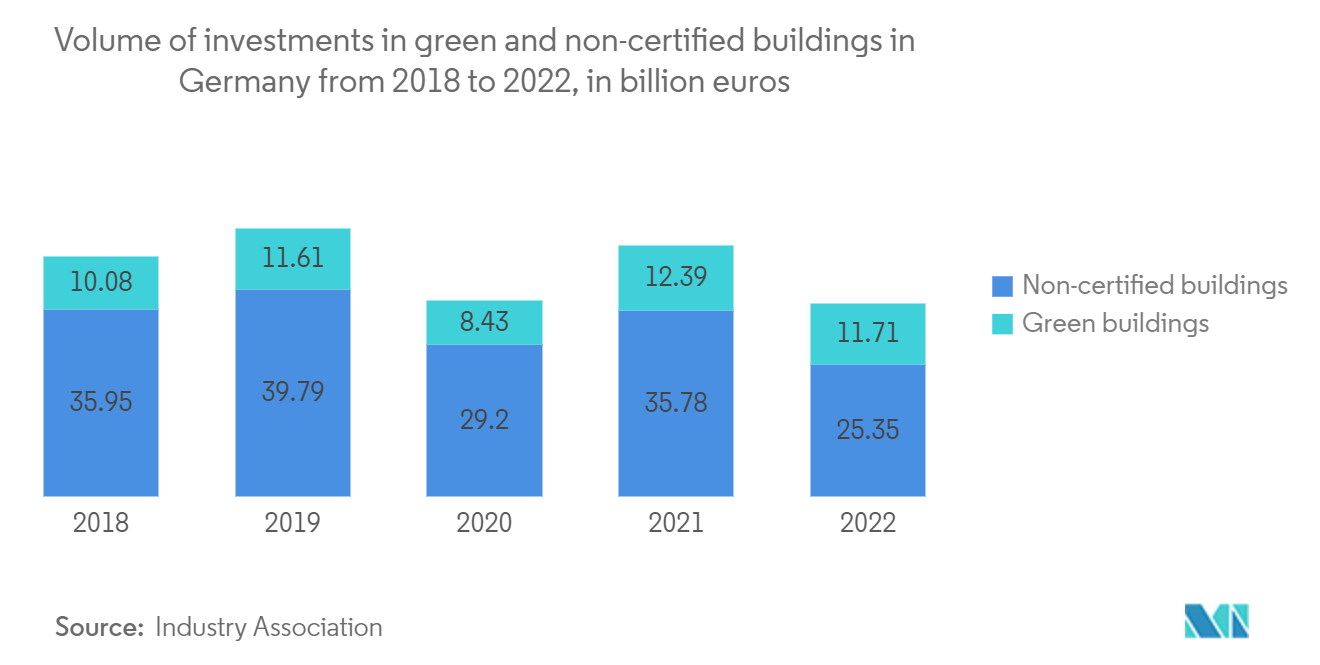Market Trends of Europe Advanced Building Materials Industry
Increasing demand for green building
- The EU Green Buildings Pact aims to make public and residential buildings more climate-friendly by improving insulation and energy efficiency. The goal is to double renovation rates by 2030.
- The European Commission has proposed that the worst 15 percent of residential buildings in each country be improved by 2030 and again by 2033. Non-residential buildings face a similar timetable. Italy's National Building Association ANCE estimates that to meet the Green Building Pact’s goals, 1.8 million residential buildings will have to be upgraded over the next 10 years at a cost of EUR 400 billion (USD 421 billion). A further EUR 190 billion (USD 200 billion) will be needed to bring business properties to the required standards.
- Commercial property managers in Italy, Spain, and France are planning to increase spending by an average of 2.7% in 2023, up from 1.8% the previous year, according to a separate survey of 125 decision-makers for commercial properties. Of those surveyed, only German property managers indicated they would invest about 1% less in green renovation. However, between 2021 and 2022, Germany increased eco-friendly building projects by 18%, the most of any European country, with 35% of respondents noting they made changes last year.

Improving energy efficiency in buildings
- Buildings are the single largest energy consumer in the European Union, making up 40% of the bloc’s energy consumption and 36% of greenhouse gas emissions. However, despite compulsory efficiency assessments, the energy performance of buildings still has little impact on buyers’ and renters’ decisions. While new buildings are becoming more and more efficient, the rate of renovations for existing ones is still too low to turn the tide.
- The European Union (EU), which aims to renovate tens of millions of inefficient buildings before 2030, is looking to modernize the current building performance status quo for its 27 member states. To that effect, it awarded a three-year grant in 2021 totaling 1.99 million euros (USD 2.1 million) to a consortium called Towards Innovative Methods for Energy Performance Assessment and Certification (or TIMEPAC) to switch the EU’s EPC system from a static certification to a dynamic process.
- The EU’s motivation to reform its building performance regulations is part of its 2030 target to reduce greenhouse gas emissions by 55% compared to 1990.
- According to European Statistics, buildings account for 40% of EU energy consumption and 36% of energy-related GHG emissions. About one-third of all EU buildings are over 50 years old, and nearly 75% of the building stock could be more energy efficient, with only about 1% undergoing renovation each year.


